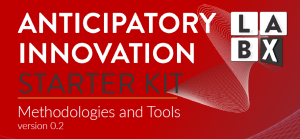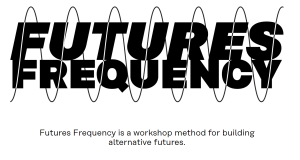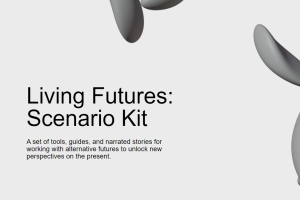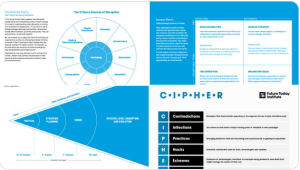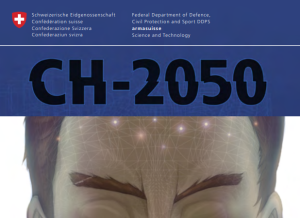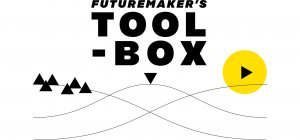Traditional planning tools and methods rely on the past and current factors, whereas futures and foresight methods embrace uncertainty and encourage the analysis and consideration or a range of future possibilities to inform decision-making and public policy
The future is not a fully formed, knowable entity which exists objectively somewhere else. It is an emergent, socially constructed entity which always and only partially exists subjectively in the here-and-now. There is no absolute future, but there are many relative futures. The futures can take many different forms: predicted, projected, preferred, path–dependent, probable, plausible, and possible. Together, these make up our anticipation. Futures are mental models and stories we believe about the future. We all have these mental models, whether we realise it or not.
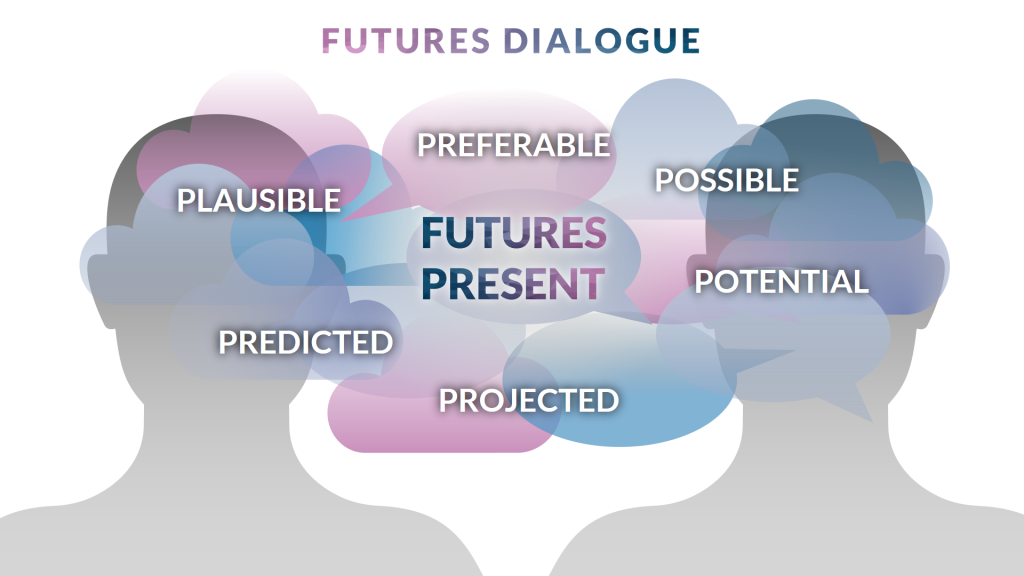
Strategic foresight is the ability of an organisation to constantly perceive, make sense of, and act upon ideas about future change emerging in the present. The practice of strategic foresight seeks to challenge and enrich our mental models and stories about the future in order to give us greater knowledge on which to act in the present. Strategic foresight thereby helps us to envisage new solutions, to stress-test our plans to make them more robust, to develop early-warning systems for threats and opportunities, and to share and clarify our visions of success. It is a form of collective intelligence which can only be generated and accessed through dialogue. It is not possible to passively “study the future” and hope to learn anything worthwhile. Likewise, futures and foresight are always used for someone (a user or users) to serve some purpose (a use or uses).
Considerations for use in the public sector
In the public sector, every policy designed and delivered carries implicit or explicit notions of the context in which it will be implemented, the intended consequences, and its potential effectiveness. Often these notions are based on expectations, forecasts, predictions, and assumptions about what the world will look like and how it will work.
Expectations, forecasts, predictions, and assumptions allow us to make decisions. But they can also contain biases and blind spots. Forecasts and predictions are not well suited to situations of volatility, uncertainty, complexity, and ambiguity because they project the future in a linear way that is not reflected in reality. Strategic foresight tools complement those of prediction and forecasting by allowing us to appreciate emerging, complex, and uncertain developments which could be surprising and significant in the future.
Governments face barriers to the effective development and use of strategic foresight in the context of a still-dominant culture of forecast-based policy planning. As a result, high-quality policy-driven foresight is underused. We call this challenge the ‘impact gap’. Some of the most common barriers to the effective use of foresight in the public sector include:
- Barriers relating to authorising environment (such as thematic silos, lack of support from senior decision makers, conflicts of interest and public values
- Barriers relating to individual agency (including cognitive biases), such as aversion to uncertainty, groupthink, status quo bias and loss aversion, and conflict of incentives for taking action amidst uncertainty
To overcome these barriers, it is essential to implement strategic foresight within a context of anticipatory innovation governance, building an authorising environment and the agency needed to legitimise and sustain the effort, and give effect to the knowledge generated. Organisations which deny future possibilities that they find inconvenient, uncomfortable, or unpalatable risk finding themselves totally unprepared if such possibilities become realities.
Typical methods and tools
Strategic foresight has methods and tools for each part of the process of perceiving, making sense of, and acting on emerging futures. These three parts are not sequential steps but rather aspects of a constant iterative process where each can inform the others. The list below provides an overview of the main types of analysis used.
Perceiving what’s happening
This involves building contextual awareness and generally takes the form of horizon scanning. Horizon scanning is the foundation of any strategic foresight process. It involves seeking and researching signals of change in the present and their potential future impacts. It can involve methods such as:
- Desk research
- Trend watching
- Expert surveys, such as the Delphi method
- Web scraping and social media crawling
- Text mining
- Literature review, including reviews of futures literature, such as Metafore
There are also many ways in which signals of emerging future change can be further developed, for example through exploration and speculation. Some examples include:
- Futures wheel or cascading: thinking of a small number of consequences for a given signal of change, then second-order consequences (the consequences of the consequences), then third-order consequences, and so on.
- Cross-impacting: considering what might be the combined effect of two signals co-occurring
- Roadmapping and technology assessment: a scientific process that aims to contribute to the formation of public and political opinion on societal aspects and potential impact of science and technology. Some sub-fields of TA also deal with the design, development, and implementation processes of technology.
Perceiving can also take place at the end of a foresight process in the form of setting up a way to monitor and identify early signals of change which could require a rapid response:
- Early warning systems
See Toolkits that include scanning, fact finding, and surfacing implicit knowledge.
Sense-making on why it matters
The overabundance of information in today’s world means that the number of signals of emerging change is beyond what any human or organisation can comprehend. There must be a way to sort signal from noise. And yet it is still only ever a fraction of the total information yet to emerge. Strategic foresight does not use probabilistic methods to gauge how likely a signal is to “come true”, but rather to select a range of signals that can be used to challenge, reframe, and reshape the user organisation’s worldview.
- Megatrends analysis: exploring and reviewing of large-scale changes building in the present at the intersection of multiple policy domains, with complex and multidimensional impacts in the future.
- Scenario planning: developing multiple stories or images of how the future could look in order to explore and learn from them in terms of implications for the present.
- Backcasting: starting from a vision of a desirable future, then working backwards from the future to identify steps to achieve it. Backcasting has also been referred to as ‘Backward from the Future’ thinking. It can also work with undesirable futures and steps needed to avoid them.
- Causal layered analysis: an approach which integrates signals, drivers, context, discourse, and values or mythology to gain a comprehensive picture of a future state.
- Systems modelling: though not limited in use to strategic foresight, approaches such as system dynamics models can be used to generate numerous alternative future outcomes based on a set of assumptions about the way the world works.
- Risk assessment: strictly speaking not a foresight method, risk assessment seeks to quantify the impact and probability of certain events. This is in contrast to foresight methods, which do not attempt to quantify either, and which explore shifting context as much as the events which might occur.
See Toolkits that include exploring cultural myths, uncovering beliefs and values, and visualising a system or set of relationships
Acting on what can or could be done differently
It is not enough to detect and make sense of current and future change but is also imperative to act based on that knowledge and incorporate it into decisions and policy on the ground.
- Visioning: developing an image of a desirable (or undesirable) future state, and working backwards to identify what steps to take (or avoid).
- Wind-tunnelling: taking an existing strategy or policy, and exploring how it might perform (or fail) in alternative future conditions.
- Future SWOT analysis: identifying an organisation’s strengths, weaknesses, opportunities, and threats in varying future contexts in order to identify how to better perform.
- Strategic options canvas: using elements of strategy (such as partnerships, human resources, financing, research, etc.) to guide identification of potential actions.
- Serious gaming or war gaming: designing and using strategy games for learning from simulated real or fictional situations.
See Toolkits that include comparing different possible approaches, imagining different futures, and strategic design.
If you do not know which Futures and Foresight toolkit to start with, try browsing all of them.
Related Guidance
- Anticipatory Innovation Governance: what it is, how it works, and why we need it more than ever before.
- Unboxing the Future: brief on how strategic foresight works and its added value in policy making.
- Strategic Foresight for Better Policies: introductory brief developed by the OECD with government foresight experts and others on best practices in building systems of foresight in public administration.
- Scenarios user guide: chapter within a recent OECD report on how to use scenarios in effective policy dialogue.
Would you like some help?
How well-versed are you with applying these tools and methods? Do you have experience with applying these approaches in practise? If not, then the language and complexity of the working methods can be daunting. Find help and connect to a someone who has practical experience in addressing public sector challenges. But be aware so that you do not get sucked into applying their favourite method instead of leading with your unique problem or situation.
Learn about building skills and capacity
Find OPSI network members who are working with Futures & Foresight
Reach out to OPSI for guidance
Request a webinar on this topic – top-requested topics will be prioritised
View related topics:


